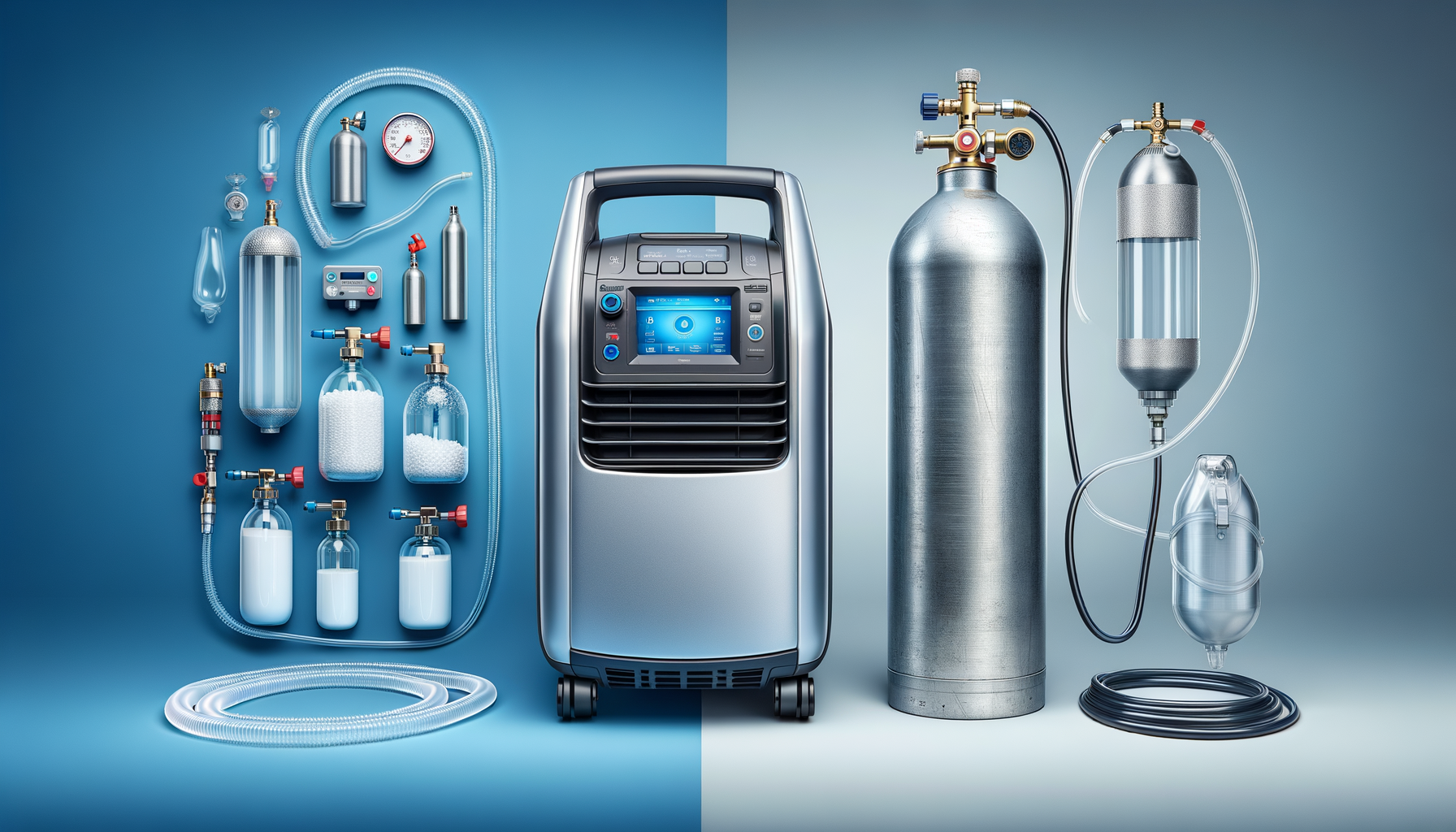What Are The Differences Between Portable Oxygen Concentrators And Oxygen Tanks For Seniors
Is it sometimes unclear which oxygen delivery method might be more suitable for a particular individual? Exploring the characteristics of different options can reveal helpful differences. Understanding these distinctions can be valuable when considering supportive devices.

Key Differences Between Portable Oxygen Concentrators And Oxygen Tanks For Seniors
Oxygen therapy is a crucial component for many seniors managing chronic respiratory conditions. Understanding the key differences between portable oxygen concentrators and oxygen tanks can help individuals make informed choices about their health care. Portable oxygen concentrators are devices that filter and concentrate oxygen from the surrounding air, delivering it directly to the user. They are generally compact, lightweight, and designed for ease of mobility, which is a significant advantage for seniors who wish to maintain an active lifestyle. On the other hand, oxygen tanks store compressed oxygen and require refilling, which can limit mobility due to their bulkiness and the need for a regular supply.
The primary distinction lies in the source of oxygen: concentrators create oxygen from ambient air, while tanks store a finite amount of oxygen. This difference affects not only the convenience but also the safety and cost-effectiveness of each option. Portable oxygen concentrators often come with rechargeable batteries, allowing for extended use without needing a refill. In contrast, oxygen tanks need frequent refilling, which can become a logistical challenge.
Moreover, the maintenance and operation of these devices vary. Concentrators typically require minimal upkeep beyond regular filter changes, whereas tanks need careful handling and monitoring due to the pressurized contents. These differences highlight the importance of evaluating personal needs and preferences when choosing between these two options.
Advantages Of Portable Oxygen Concentrators Over Oxygen Tanks For Seniors
When considering the advantages of portable oxygen concentrators over oxygen tanks for seniors, mobility and convenience are often at the forefront. Portable oxygen concentrators allow seniors to move freely without being tethered to a bulky tank. This freedom is especially beneficial for those who enjoy traveling or engaging in outdoor activities. The compact design of concentrators makes them easier to carry, enhancing the quality of life by promoting independence.
Another significant advantage is the continuous supply of oxygen. Unlike tanks that deplete over time and require refills, portable oxygen concentrators can provide an uninterrupted flow of oxygen as long as they are powered. This feature eliminates the anxiety of running out of oxygen during outings or emergencies, offering peace of mind to users and their families.
Additionally, the cost-effectiveness of concentrators can be appealing. While the initial investment might be higher compared to tanks, the long-term savings on refills and maintenance can offset this cost. Concentrators are also considered safer since they do not store compressed oxygen, reducing the risk of leaks and accidents. These benefits make portable oxygen concentrators a preferred choice for many seniors seeking a reliable and user-friendly oxygen delivery method.
How To Choose Between Portable Oxygen Concentrators And Oxygen Tanks For Seniors
Deciding between portable oxygen concentrators and oxygen tanks for seniors involves assessing individual needs, lifestyle, and budget. The choice largely depends on the level of mobility desired and the specific medical requirements of the user. For seniors who prioritize independence and travel, portable oxygen concentrators are often more suitable due to their lightweight and rechargeable nature.
When making this decision, it’s crucial to consult with healthcare professionals to determine the appropriate oxygen flow rate and duration needed. Some medical conditions may require the high flow rates that only certain tanks can provide, making them a better option despite their lack of portability. Conversely, those who require lower flow rates might find concentrators more convenient and efficient.
Budget considerations also play a role. While portable oxygen concentrators can be more expensive initially, they may prove more economical in the long run due to lower maintenance and refill costs. Evaluating insurance coverage and potential financial assistance programs can further aid in making an informed choice.
Ultimately, the decision should be based on a comprehensive evaluation of personal preferences, medical advice, and financial implications. By understanding the unique features and benefits of each option, seniors and their caregivers can select the oxygen delivery method that best supports their health and lifestyle goals.